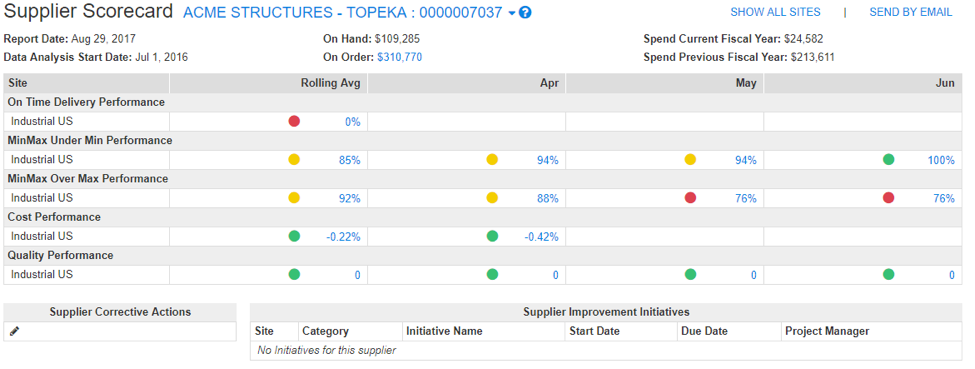Suppliers are your friends! Depending on your role in your organization, they may be your most important friends. A supply chain can become highly streamlined or remain stagnant based on relationship with your vendors. With less-than-perfect supplier communication, incorrect parts are shipped, dates are missed resulting in shortages for your business, and targets are missed. Not to mention all that stress, on both sides! If your supplier relationships are a bit bumpy at times, don’t worry -- a little preparation and communication can go a long way. Here are 5 tips for improving communication with your suppliers and reaping the results.
1. Set Clear Expectations for Reporting and Supplier Communication
Every manufacturer has systems in place for reporting, order management, and supplier performance management. Without consistency, we’d all go a little crazy! But if your business regularly bounces from one shortage report format to another, or implements a new supplier portal every month, efficiency and effectiveness take a dive.
Establish a clear plan for how to communicate with suppliers at the very beginning of a new relationship. This ensures an effective business partnership – fewer shortages, more on-time deliveries, less rush shipping costs, and best of all, fewer headaches for you. That’s not to say there is no room for upgrades, but make sure your updates are thoughtful.
From the beginning, set expectations for the data you need from your suppliers. Once you have that, provide a consistent platform in which your supplier can carry out those expectations. You should be able to update statuses and communicate back and forth at a part level. This makes for status updates that are easy to edit and track.
A good supplier communication tool can be a powerful way to operationalize effective communication. It should:
- Be easily accessible for everyone
- Be simple to use and easy to get new users up and running
- Contain all important data both parties need to see
- Feature built-in collaboration tools, like in-project commenting
- Allow for simple, trackable communication
- Let you roll up results to see business value across all suppliers

2. Know Your Parts
When you call or email a supplier, it is important to have your questions ready. What PO number do you need to discuss? Is it a VMI part? Does it have a minimum order quantity? What is the lead time for the part you are expecting to expedite?
When working with Supply Chain leaders and practitioners, we always hear a sigh of relief at the prospect of reducing unnecessary email volume. Not only does this create an easy 2-way supplier communication flow, but it cuts down on the number of messages that can pile up.
Make sure you know everything you can about products you need to discuss before you call or email. Sounds simple, right? This gets more difficult, however, with complicated ERPs and thousands of part numbers. There are tools out there that provide a window into ERP systems, that make important information easily accessible.
Everyone benefits when you know everything you can about the parts you need to discuss. This will ease the discussion and eliminate the risk of the two of you discussing two different parts without realizing it. (We all know it happens!)
3. Establish Clear Measurement Requirements

In addition to setting expectations for the information you need from a supplier, it is helpful to set standards for how you measure that data. Many companies report on and communicate these metrics with supplier scorecards, created by the manufacturer and shared with the supplier on a regular basis to track performance.
Each manufacturer will have specific needs, but tracking these key metrics will help ensure success:
- On-Time Delivery Performance - the ratio of on-time deliveries to total deliveries scheduled in a month
- Inventory Under Min Performance - the percentage of the supplier’s items that are under the Min level, calculated with respect to the total number of items on Min/Max (not the total number of items in general).
- Inventory Over Max Performance - the percentage of the supplier’s items that are over the Max level, calculated with respect to the total number of items on Min/Max (not the total number of items in general).
- Cost Performance - the percentage deviation from the standard costs for all items supplied by the given supplier. The calculation is: (Units Received *Receipt Price) / (Units Received *Baseline Standard Price) = Cost Performance %.
- Quality Performance - the Defective Parts Per Million (DPPM) based on the defect percentage (number of defects / total number of individual item receipts).
4. Be Respectful of Their Time
I’m sure your supplier loves having your business, but that doesn’t mean they want to hear from you 30 times a day.
Once you become organized in your supplier communication approach, you greatly increase your ability to be concise. Why send a 15-paragraph email when a five-sentence message will do? If you have all your ducks in a row, you can quickly communicate your question without unnecessary details.
Your vendor likely supplies parts to multiple customers, which means that they have dozens of calls and emails being thrown at them every day. They will love you if you get right to the point! And once your supplier knows that you are easy to work with, you can bet that your messages will find their way to the top of the pile.
Along those lines, don’t send an urgent email at 4:55pm on Friday afternoon. Your supplier will either ignore you, or wish they had ignored you. Due to the volatile nature of supply chain, it is impossible to prevent all urgent emails, but that doesn’t mean you can forget that you are dealing with another human being.
5. Be Quick, But Don’t Hurry
 “Be quick, but don’t hurry” is a famous quote from legendary basketball coach John Wooden. He wanted his team to play a fast-paced game, but never be out to control.
“Be quick, but don’t hurry” is a famous quote from legendary basketball coach John Wooden. He wanted his team to play a fast-paced game, but never be out to control.
Supply chain is also a fast-paced game. If you move too slowly, you cost your company time and money. However, if you go too fast, you can also experience a negative result.
Hurrying may cause you to place incorrect orders or overlook important details. When you are able to move quickly but avoid rushing, there is less risk of inventory spikes or shortage situations.
The Importance of Communication With Suppliers
Your ability to create higher vendor satisfaction will positively affect your bottom line.
Half the battle is remembering the golden rule - treat others the way you want to be treated. From there, be prepared and knowledgeable. When you know your parts and are consistent in running your business, you create a system of supplier communication that is more manageable and measurable.
With the above tips, you can improve your relationship with your supplier in no time.
Streamline communication and collaboration efforts with every supplier using LeanDNA. Schedule 15 minutes with one of our experts to see how it works.
